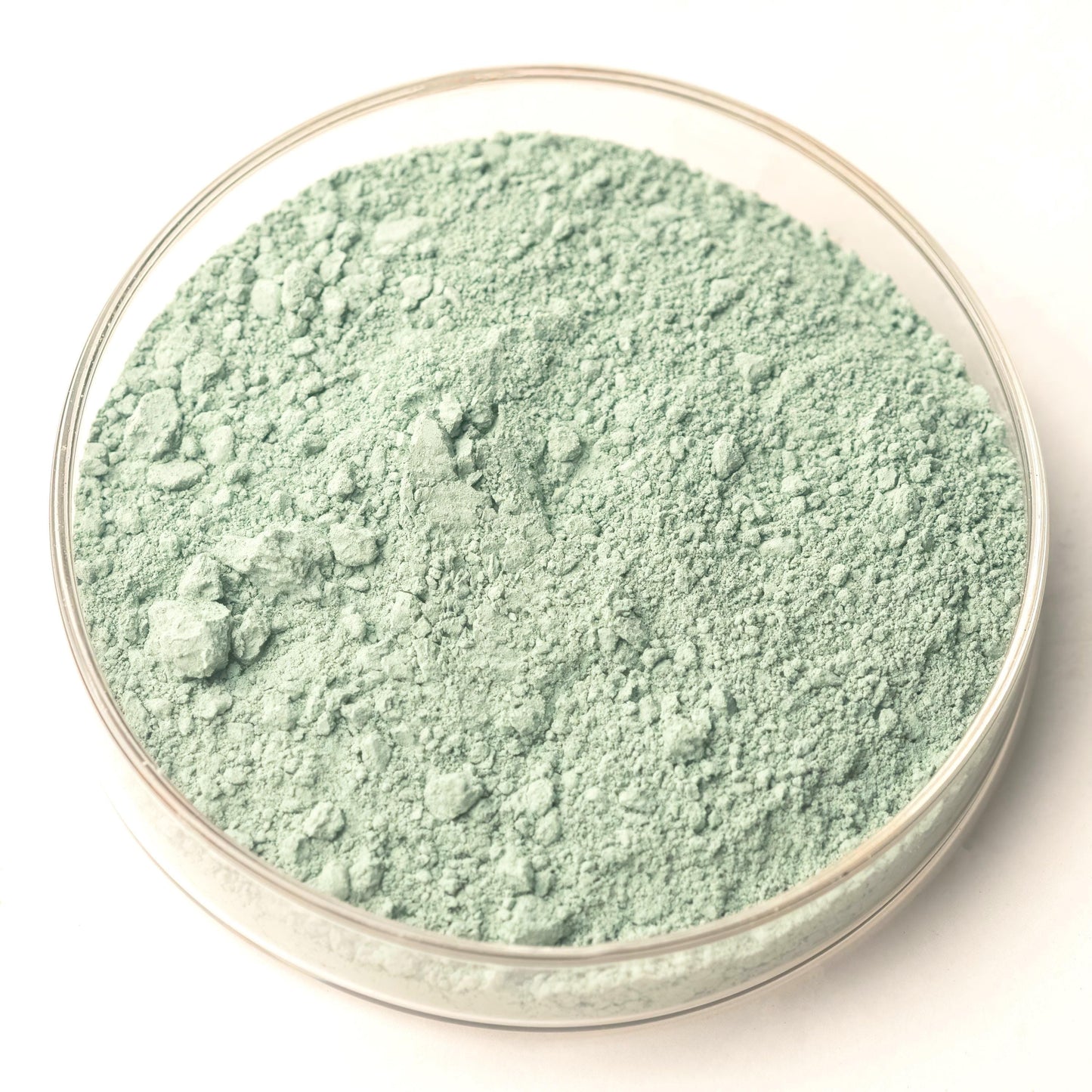Stone Chrysocolla
Stone Chrysocolla
Couldn't load pickup availability
Share

Description
Chrysocolla is a striking turquoise-blue to blue-green pigment derived from the hydrated copper silicate mineral of the same name. When finely ground, it produces soft, luminous tones ranging from sea-green to deep cyan, with a slightly translucent quality.
As a pigment, Chrysocolla is semi-transparent with gentle granulation. It is not as intense as azurite or malachite but offers a unique muted brilliance, especially valued for creating subtle skies, waters, and naturalistic greens. It mixes well with earth tones and other copper-based pigments to produce a range of harmonious hues.
History
Chrysocolla has been known since antiquity, named from the Greek chrysos (“gold”) and kolla (“glue”), because it was historically used in soldering gold. Ancient Egyptians, Greeks, and Romans valued it as a decorative stone and as a pigment source.
It was occasionally used in wall painting, manuscripts, and decorative arts, though less commonly than azurite and malachite due to its softer structure and variable permanence. Some ancient frescoes and artifacts retain traces of chrysocolla-based blue-greens, testifying to its role in historical palettes.
Because it is relatively soft (Mohs hardness 2–4), it is less durable than other copper minerals. However, it remains prized among pigment artisans and conservators for historical reconstructions and its gentle, natural hues.
Pigment Information
Pigment Type: Natural Mineral (Hydrated Copper Silicate)
Chemical Composition: (Cu,Al)₂H₂Si₂O₅(OH)₄·nH₂O
Suitable Mediums: Watercolor, Tempera, Fresco, Mixed Media (not generally used in oil due to instability)
Lightfastness: Moderate
Opacity: Semi-Transparent
Other Names: Chrysocolla Blue, Copper Silicate Green
Color Index Code: N/A

